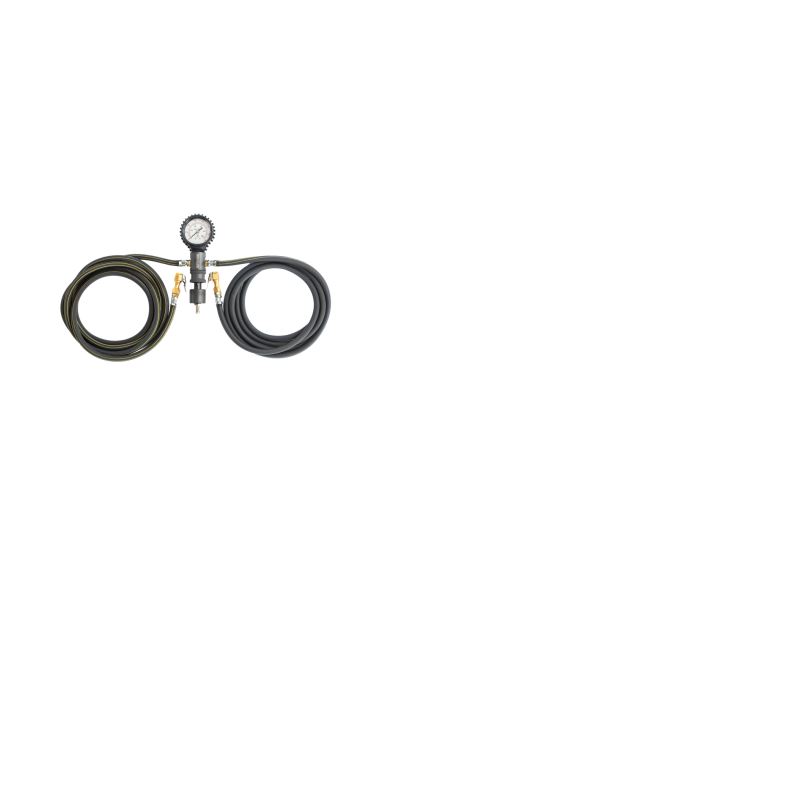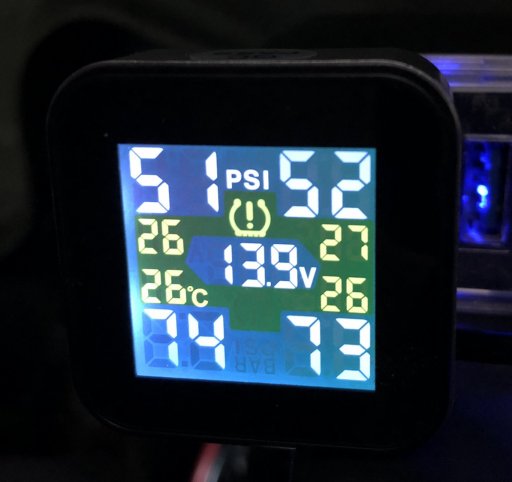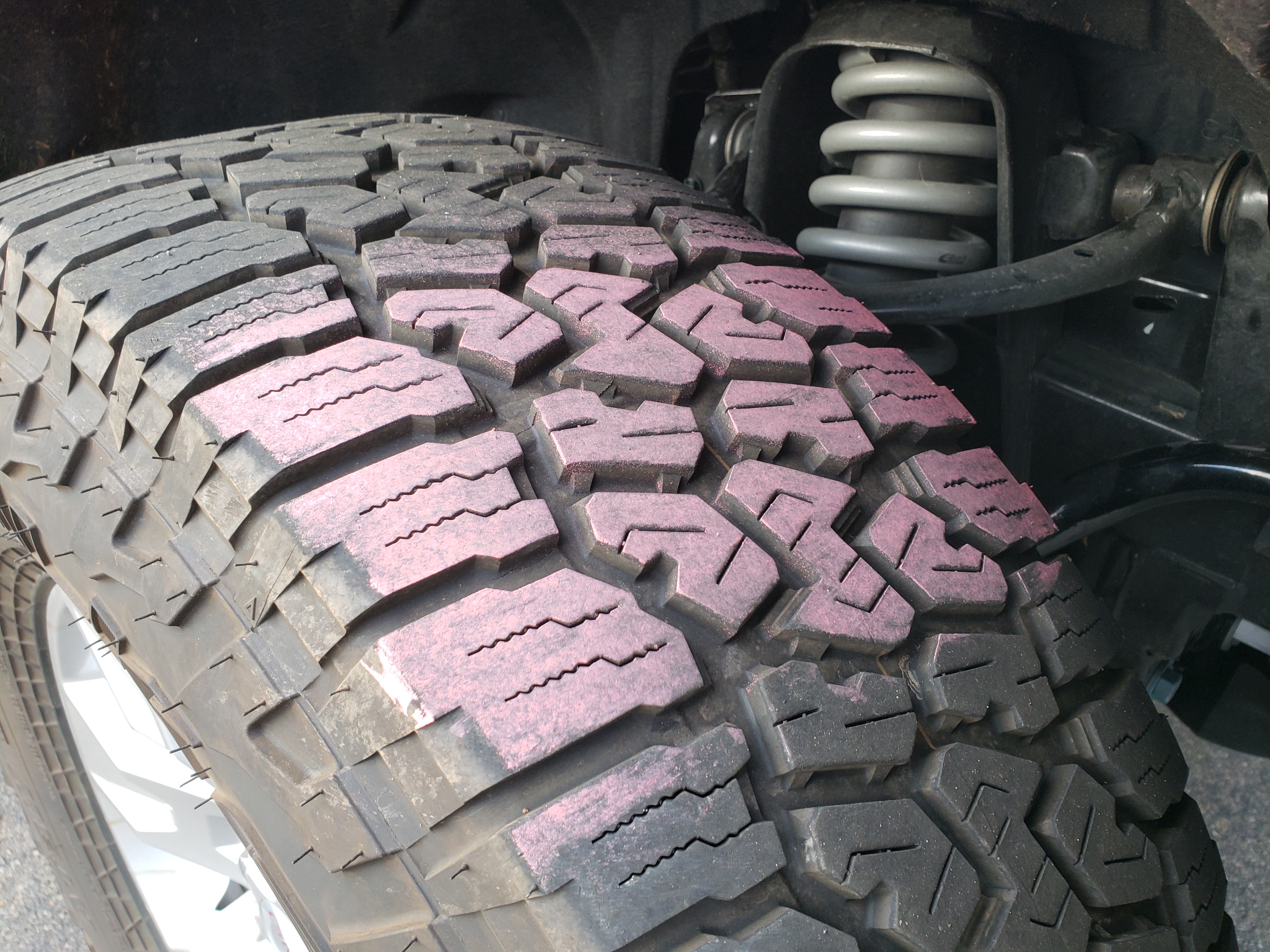What tire pressure are you running your e rated tires at for daily driving?
- Thread starter Tray
- Start date

Influencer I
Yep we covered that a few posts ago.There is no way to give you the best tire pressure for your rig. The best way to find out though is the chalk test. Mark a decent sized strip across your tread and drive half a mile. Check it, if the center is more rubbed off then you are overinflated. If the edges show more wear you are under inflated. Once you have about even wear you have found the perfect psi. You can normally get it very close to ideal within 2-3 attempts.

Member I
Suppose I should've skimmed through the previous post.Yep we covered that a few posts ago.

Influencer I
No worriesSuppose I should've skimmed through the previous post.

Member III
- 2,771
- First Name
- Rolando
- Last Name
- Nispiros
- Member #
-
17011
- Ham/GMRS Callsign
- KN6JJS
No insult taken. I knew it was a dumb question to begin with lol. My truck doesn’t have a tire pressure monitor. I just don’t want to be that guy with tire pressure issues on or off the trail lol.I actually don't think it's that deep honestly. No insult intended. I just think if you air down when you get to the trail and air back up when you are done it should be fine. Just air up to what you want and check them after 10-15 miles of highway use if you are concerned. Does your rig have tire pressure monitor? If so it makes this issue much easier to check. If you were to air up and then drive a short distance to a hotel or such and stayed for the night then I would for sure check your tire pressures before leaving the next morning.

Influencer I
It's all good brother! Not a worry to be had sir.Suppose I should've skimmed through the previous post.
I ran BFG 255/80R17s E LR on a Jeep TJ. Way more tire than I needed but I wanted a skinny 33.
BFG has no minimum pressure rating but I ran 26psi with no issues, even traed wear, typical E LR ride.
BFG has no minimum pressure rating but I ran 26psi with no issues, even traed wear, typical E LR ride.

Member III
- 2,771
- First Name
- Rolando
- Last Name
- Nispiros
- Member #
-
17011
- Ham/GMRS Callsign
- KN6JJS
Going to give this a try. I have factory tire pressure sensors on my new cars. My 02 truck, not so much. This got good reviews on Amazon. I normally don't buy anything with less than a 70% good rating. I know, I have low standards lol.
I'd spend money on a fill/deflate whip instead.
It connects to 2 tires at once to inflate or deflate, and has a built in guage. Usually around $80. Reduces pressure setting time by more than half. And you can do it standing up.
It connects to 2 tires at once to inflate or deflate, and has a built in guage. Usually around $80. Reduces pressure setting time by more than half. And you can do it standing up.

Member III
- 2,771
- First Name
- Rolando
- Last Name
- Nispiros
- Member #
-
17011
- Ham/GMRS Callsign
- KN6JJS
What do you think of these deflator kits?I'd spend money on a fill/deflate whip instead.
It connects to 2 tires at once to inflate or deflate, and has a built in guage. Usually around $80. Reduces pressure setting time by more than half. And you can do it standing up.
Get this instead. Darn it's double what it used to be:



Member III
- 2,771
- First Name
- Rolando
- Last Name
- Nispiros
- Member #
-
17011
- Ham/GMRS Callsign
- KN6JJS
Now that's cool!Get this instead. Darn it's double what it used to be:

I have had making one of those on my list for a long time. Always something that gets bumped ahead of it.Get this instead. Darn it's double what it used to be:


Member III
- 2,771
- First Name
- Rolando
- Last Name
- Nispiros
- Member #
-
17011
- Ham/GMRS Callsign
- KN6JJS
Just installed it. Pretty cool.Going to give this a try. I have factory tire pressure sensors on my new cars. My 02 truck, not so much. This got good reviews on Amazon. I normally don't buy anything with less than a 70% good rating. I know, I have low standards lol.
 Has PSI, temp, and battery voltage. Also has USB port on the side and display is reversible.
Has PSI, temp, and battery voltage. Also has USB port on the side and display is reversible.Is the chalk test done while the tires are cold?....chalk test...
When the tire warms up on the road it gains a few PSI. Also, at full highway speeds, I wonder, if tire also deforms a little more in the center due to centrifugal forces. So, would you estimate and account for these factors after doing a chalk test?

Pathfinder I
I use similar ones by Boulder Tool and they work well once you dial in the set pressure. Having a pressure readout in the dash is helpful when using them otherwise I'd probably just pull the cores and lower pressure that way.What do you think of these deflator kits?
As for your tire pressure question, you won't have to worry about overinflation unless you typically run within 4psi of max pressure and most manufacturer placard levels are well below that. For example, the Canyon placard levels are 35psi. With the OEM tires the max pressure listed on the sidewall is 44psi. So if I get off the trail and air up to 35psi I can expect a pressure drop of around 3-4psi when I check them the next morning due to lower ambient temp and cold tires. If I wanted to run at placard levels, no lower, then I would estimate the pressure drop that would occur when the air and tire temps drop and inflate the tires by that much over placard. Ie, I would probably inflate to 38psi hot. I would then check tire pressure the next morning and see if I was right. If I am wrong I'd simply add or remove air as needed while the tires are cold. It is important to note that it is far more dangerous to run tire pressure too low than it is too high (within reason). Low tire pressure causes the tire to flex more and generate heat which leads to tire failure. So in my example above with my tires set at 38psi hot, the ambient temperature would have to increase by approximately 60F before the tire pressure would reach max pressure level of 40psi. Using the general rule of 1psi change in pressure for every 10F change in temperature.
https://www.tirerack.com/tires/tiretech/techpage.jsp?techid=73
I run my Wildpeaks (LT285/70/17) at around 33psi rear and 36psi front for daily driving and between 17psi and 20psi off-road. When I did the chalk test on the same tire but in P-metric form I found 33psi/36psi provided the most even wear but 36psi+ produced better fuel economy. I haven't done the chalk test on the LT version I'm now running. The problem I have is my TPMS system reads about 3psi or so low compared to every gauge I've ever used. So 33psi/36psi on a gauge looks like 30psi/33psi on my dash display. That's super annoying. :) My truck weighs about 5250lbs daily driven and 5,850 when fully loaded for camping.
33psi (dash display) on the front tire chalk test with P285/70/17


Member III
- 2,771
- First Name
- Rolando
- Last Name
- Nispiros
- Member #
-
17011
- Ham/GMRS Callsign
- KN6JJS
Thanks for the advice and info JC! By looking at some of the YouTube vids I've seen the deflator kit requires some dialing in/configuration. Something I would need to practice off the trail. I just have to get out there a couple of times and I'll get the hang of it.I use similar ones by Boulder Tool and they work well once you dial in the set pressure. Having a pressure readout in the dash is helpful when using them otherwise I'd probably just pull the cores and lower pressure that way.
As for your tire pressure question, you won't have to worry about overinflation unless you typically run within 4psi of max pressure and most manufacturer placard levels are well below that. For example, the Canyon placard levels are 35psi. With the OEM tires the max pressure listed on the sidewall is 44psi. So if I get off the trail and air up to 35psi I can expect a pressure drop of around 3-4psi when I check them the next morning due to lower ambient temp and cold tires. If I wanted to run at placard levels, no lower, then I would estimate the pressure drop that would occur when the air and tire temps drop and inflate the tires by that much over placard. Ie, I would probably inflate to 38psi hot. I would then check tire pressure the next morning and see if I was right. If I am wrong I'd simply add or remove air as needed while the tires are cold. It is important to note that it is far more dangerous to run tire pressure too low than it is too high (within reason). Low tire pressure causes the tire to flex more and generate heat which leads to tire failure. So in my example above with my tires set at 38psi hot, the ambient temperature would have to increase by approximately 60F before the tire pressure would reach max pressure level of 40psi. Using the general rule of 1psi change in pressure for every 10F change in temperature.
https://www.tirerack.com/tires/tiretech/techpage.jsp?techid=73
I run my Wildpeaks (LT285/70/17) at around 33psi rear and 36psi front for daily driving and between 17psi and 20psi off-road. When I did the chalk test on the same tire but in P-metric form I found 33psi/36psi provided the most even wear but 36psi+ produced better fuel economy. I haven't done the chalk test on the LT version I'm now running. The problem I have is my TPMS system reads about 3psi or so low compared to every gauge I've ever used. So 33psi/36psi on a gauge looks like 30psi/33psi on my dash display. That's super annoying. :) My truck weighs about 5250lbs daily driven and 5,850 when fully loaded for camping.
33psi (dash display) on the front tire chalk test with P285/70/17


Pathfinder I
We can get them dialed easily on the Henness Pass trip if you get them. :)Thanks for the advice and info JC! By looking at some of the YouTube vids I've seen the deflator kit requires some dialing in/configuration. Something I would need to practice off the trail. I just have to get out there a couple of times and I'll get the hang of it.

Member III
- 2,771
- First Name
- Rolando
- Last Name
- Nispiros
- Member #
-
17011
- Ham/GMRS Callsign
- KN6JJS
Yeah I’m still on he fence to see if I really ‘need’ them. Well see after this trip. Do you use yours every trip?We can get them dialed easily on the Henness Pass trip if you get them. :)


